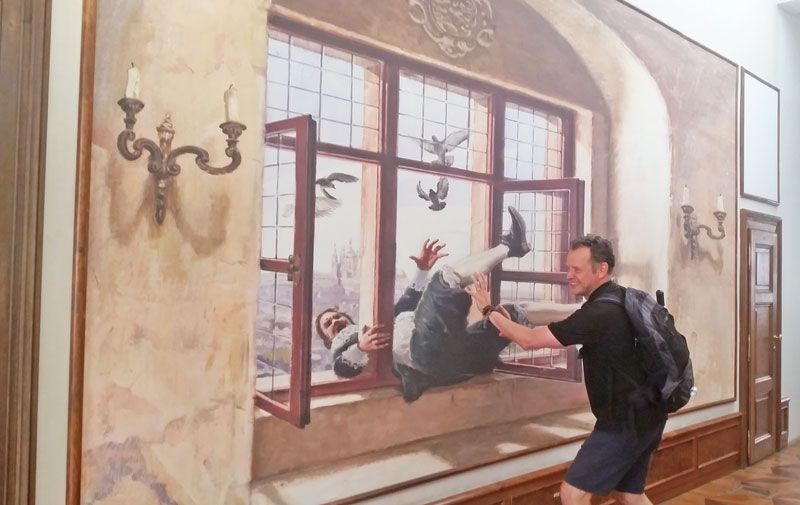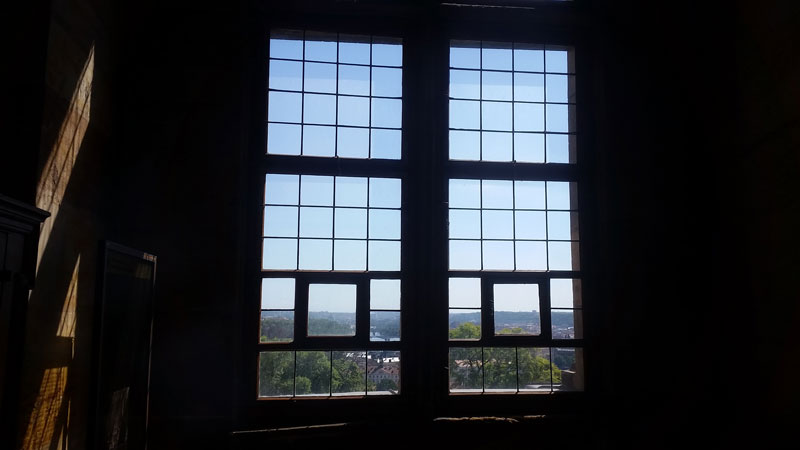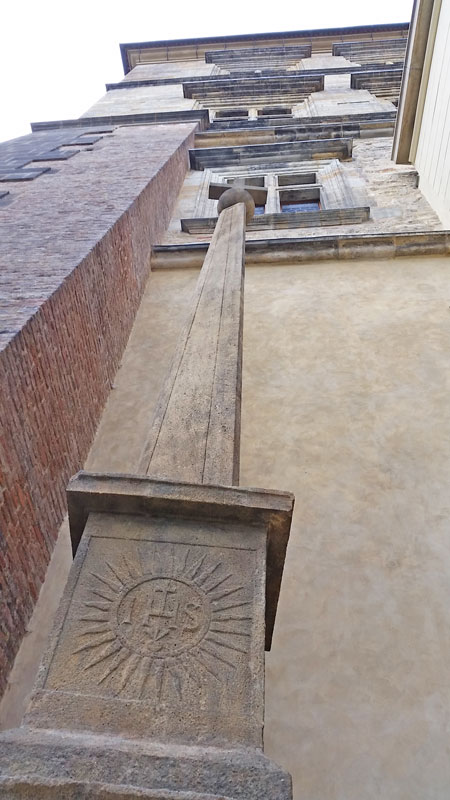Prague Defenestrations
Defenestration comes from the German word for window i.e. Fenster.
the act of throwing someone or something out of a window. expulsion, riddance, ejection, exclusion – the act of forcing out someone or something;
Oxford English Dictionary

The First and Second Prague Defenestrations
As far as throwing people out of windows goes then this seems to be a regular occurance in Czech history. It’s only that the most famous events get remembered. Back in the early 15th Century there was a guy called Jan Hus who wanted to reform the Catholic Church. He was burned at the stake for Heresy on July 6th 1415 and this started the Hussite religious movement. In 1419 during protests, two of the most important Hussites of the day (Jan Zelivsky and Jan Zizka) preached to and led a crowd to the New Town Hall with the intention of getting some supporters of the Hussite movement released from the prison located in the building. To cut a long story short, things got out of hand with several city councillors being thrown out of the first and second floor windows. If the fall did not kill them then the protestors did. The Second defenestration in 1483 was basically the same with several councillors thrown from windows and killed but this time it was both the New Town Hall and the Lesser Town Hall involved.
Tour Tips: To see where the defenestration at Prague Castle took place then you need to access the Old Royal Palace. I’ve put 4 options below to do this. Two are for self-guiders who want to skip the ticket queue line and two are for people who want to join a group and be guided.
The Third Prague Defenestration
Without doubt, this third event is the most famous, the most recorded and the one that changed history. In large part when a published guide talks about “Prague Defenestration” then it’s this one.
Bear with me on this, lots of dates. The first date is 1555 when a treaty called the “Peace of Augsburg” was signed and this gave the ruler of a country (normally a king but could be a Duke or a Prince) the right to decide which would be the major faith in that country i.e. he could choose to be Catholic or something else. Now for the next 50 years Bohemia was ruled by Catholic Habsburg Emperors and Protestants (collectively known as the Bohemian Estates) were tolerated.
Between 1600 and 1619 there were 2 different emperors. Rudolf II was a reformist Catholic Emperor but he allowed Protestants to legally and freely perform their religion which was enshrined in something called “the Letter of Majesty”. Matthias (Rudolf’s younger brother and also Catholic) was in conflict with Rudolf and took over Bohemia after the death of Rudolf in 1612 but nevertheless, he accepted the Letter of Majesty and further extended the rights of Protestants.
So the problem is that before Emperor Matthias died he did two things that appear to be polar opposites. Firstly, Matthias had allowed the Bohemian Estates (Protestants) to build their own churches on what was effectively Royal Catholic land. But with no children he named his cousin Ferdinand II, a staunch pro-Catholic, as King of Bohemia in 1617 AND heir to the Holy Roman Emperor. Ferdinand II (King) not only scrapped Rudolf II’s Letter of Majesty and denied permission for Protestants to build on Royal land, he also banned the Protestant Bohemian Estates. This is while Matthias (Holy Roman Emperor) was still alive.

Defenestration Day
So it’s May 23rd 1618. There are 4 Lord Regents (we call them Burgraves – the advisors to the king) and a scribe are in the Old Royal Palace expecting a meeting with some Protestant Czech Lords. These lords make it clear that they are not happy with their organisation being dissolved and they demand to know if the Regents had a hand in advising the king. During the meeting the Czech lords decided that two of the Regents were innocent but that the other two plus the scribe were to blame. I imagine the conversation went something like “yeah we did it, so arrest us and the king will have us released before lunchtime”. They did not get arrested. All three of them were thrown out of the window or “defenestrated”. Now when you look at the Old Royal Palace at the front it just looks like a two floor building. But at the back on the South Garden side it’s 4 floors so they fell 70 feet (fun fact – the scribe was later enobled with the title Baron von Hohenfal which literally translates as Baron of the High Fall). The picture below marks a spot where they fell.

Amazingly through luck or the hand of God (depends on who you believe) they all survived but in the grander scheme the Protestants then deposed Ferdinand II and installed their own king, Frederick V. If you want to know what happened next you’ll need to read about the Thirty Years War.
Note that to see the actual window pictured earlier where they were thrown from you have to visit the Old Royal Palace building. Then when you go into the Vladislav Hall immediately on your right side is a doorway leading to something called the Ludwig Wing. The defenestration window is in the second room on the left.
Something Related or a Few Minutes Away
Memorials – 1621 Memorial on the Old Town Square
Attraction – House at the Stone Bell
Attraction – Prague Castle Old Royal Palace
